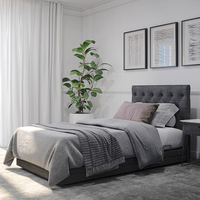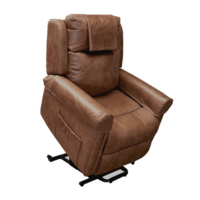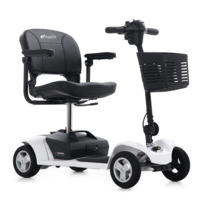How To Choose The Right Walking Aid
Many people begin to experience mobility issues as they age. A loss of muscle mass and joint problems can result in difficulty walking and, when this happens, you may look to use a mobility aid, such as a cane, rollator or wheelchair.
While some people can see a walking aid as indicative of dependence and disability, it can actually have the opposite effect. Once people begin to use a walking aid and experience increased stability and confidence when walking, they find it actually offers more independence and freedom.
If you’ve been considering a walking frame or aid for yourself or a loved one, this article outlines the different options and how to choose the right one for you.
Types of Walking Aids
Many years ago there were only a few options available to meet the needs of people with mobility issues. And even then, they were often heavy, cumbersome or difficult to use.
Recent advances in mobility aids mean there is now plenty of choices available. Walking aids and frames are more lightweight, easier to use and designed to meet specific mobility needs.
The main types of walking aids include:
Wheelchairs and mobility scooters are also often used in conjunction with walking aids to travel longer distances or when the user becomes too tired to walk or stand. For more on these options, read our article on wheelchairs and mobility scooters.
Choosing the right walking aid
Choosing a walking aid is a personal decision. A good place to start is by carefully considering your needs. Consider not only particular mobility concerns but also the activities you do or would like to do. Speaking with your doctor or occupational therapist can also help narrow down the range of walking aids that might be suitable.
Once you have an idea of the type of walking aid, test a few before deciding. Many stores offer the chance to try models on the shop floor or even take them out around the block. Or, you could look to hire a walking aid for a short period of time to see how it goes before committing to a purchase.
When narrowing down your choices, there are a few things to consider:
-
Comfort and ease of use - the most important thing to consider is whether the walking aid is comfortable and easy to use. If a walking aid causes pain or is too cumbersome, it’s likely it won’t be used when it should, leading to an increased risk of an injury or fall.
-
Storage and transport - walking aids are often used not only at home but also when out. Many walking aids come in foldable styles so they can be placed in the boot of a car. Make sure that the walking aid you choose can be easily transported.
-
Walking aids for different situations - rather than trying to find a walking aid for all situations you might want to have more than one available to you. For example, some people choose to use a rollator for going out and a walking frame at home.
Getting the right fit
Once you’ve decided on the type of walking aid, it’s important that it’s fitted correctly for your height and weight. As before, it’s best to try a few styles to see what’s the best fit for you.
When adjusting the walking frame, make sure you’re wearing supportive, comfortable shoes. The handgrip should be spaced shoulder-width apart and you want a 15- to 30-degree bend at your elbow when using the walking frame.
Using your walking aid
It may take a little time to get used to using a walking aid. It can be tricky to get the movement right, particularly is using a cane or crutches where you have to coordinate an arm and leg at the same time.
Start out on a clear, flat surface to get used to moving forward. You can then progress to ramps and steps, if appropriate. If you feel pain or discomfort when using your walking aid, don’t ignore it. It might simply need to be readjusted or changes made to the way you use it.
Once you’re comfortable using your walking aid, you’ll be able to enjoy your new found freedom.
Looking for more information on the different types of walking aids and how to choose the right one? Find out more in our Buyer’s Guide to Walking Frames and Aids or contact the team at Mobility HQ for personal advice.



























